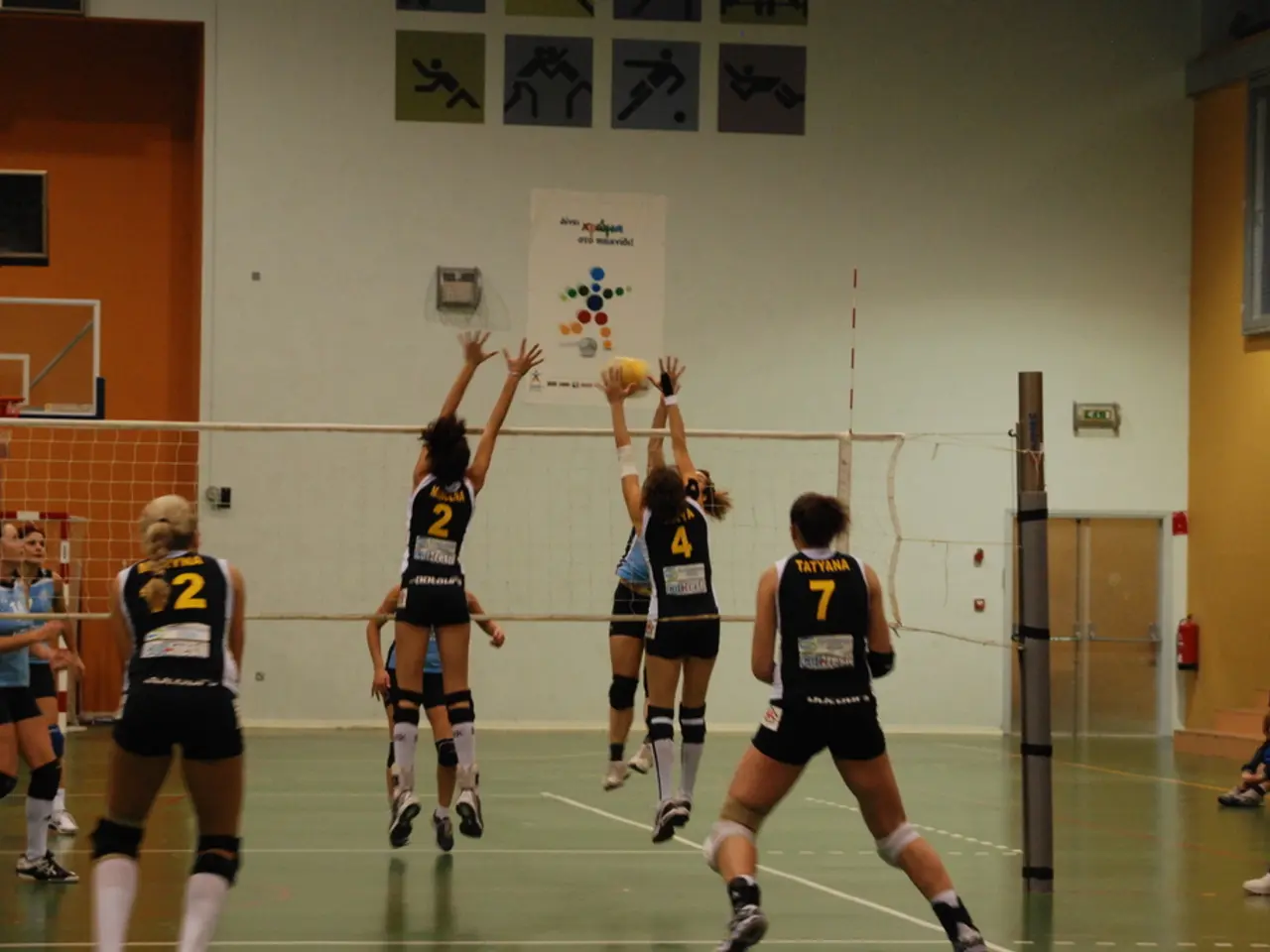Enhancing Your Pickleball Skills through Comprehension of Game Regulations
Pickleball, a fast-paced and entertaining sport, is growing in popularity worldwide. To excel in this game, understanding its rules is crucial. This article will delve into the key regulations that shape player positioning, shot selection, and pacing during a match.
Firstly, let's discuss the Double Bounce Rule. After serving, the ball must bounce once on each side of the net before players can volley it. This rule slows the pace initially and significantly affects strategies around the first hits of the rally.
Another vital regulation is the Non-Volley Zone, also known as the "Kitchen." Extending 7 feet from each side of the net, players cannot volley the ball while standing inside this zone. They can only hit the ball in the kitchen after it bounces, which prevents players from rushing the net and requires careful footwork near the net.
Serving rules are another essential aspect of Pickleball. Serves must be executed underhand with contact below the server's navel and from behind the baseline. The serve must land diagonally in the opponent's service box but cannot land in the kitchen or on the kitchen line. Serves may touch the net as long as they land legally.
Matches are played on a regulation-size court (44 feet long by 20 feet wide) with clearly marked zones, including the non-volley zone.
Game scoring and format are also standardised. Matches are often played best 2 out of 3 games, with games 1 and 2 played to 15 points (win by 2, with a freeze at 13 points), and a potential third game to 10 points (win by 2, freeze at 8).
Pickleball equipment must meet specific standards to ensure consistent play quality. Pickleballs must bounce between 30 to 34 inches when dropped from 78 inches, and approved balls and paddles must conform to USA Pickleball regulations.
Coaching from spectators or team members during gameplay is prohibited, minimizing disruptions and ensuring fairness. Violations of rules or unsportsmanlike conduct can lead to penalties or disqualification. Players must adhere strictly to all game rules throughout the match.
At higher skill levels, players use precise control over serves, returns, and third shots; dominate with dinks and strategic shot placement; and execute efficient movement and team coordination. The rules around the kitchen, double bounce, and serving deeply influence these advanced tactics.
Familiarising yourself with specific rule sets for the events in which you participate is essential. A thorough understanding of Pickleball rules can help players make better decisions, minimise errors, optimise strategy, and foster a culture of fair play on the court. Understanding the official Pickleball rulebook can help prevent disputes during matches.
Regular exposure to different gameplay scenarios can help improve rule knowledge and understanding. Actively participating in organized matches or tournaments can enhance understanding of rules and their applications. If a rule interpretation dispute arises during a match, attempt to resolve it amicably through discussion or by consulting a referee or impartial third party.
Different organizations and tournaments may have slight variations in Pickleball rules. Embracing the rules and understanding their intricacies can help unlock your full potential and elevate your Pickleball game. By adhering to the rules and communicating effectively with opponents, you can minimise disagreements and maintain a positive playing environment.
Sports enthusiasts should pay close attention to the Double Bounce Rule when playing Pickleball, which mandates that the ball must bounce once on each side of the net after serving before players can volley it. Another essential regulation to remember is the Non-Volley Zone, also known as the "Kitchen," where players cannot volley the ball while standing inside the 7-foot zone extending from each side of the net. Comprehension of these rules is crucial for excelling in this fast-paced and entertaining sport, as they significantly impact strategies in a match and set the stage for more advanced tactics at higher skill levels.





